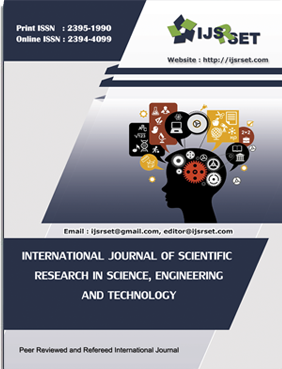From Pixels to Predictions : Leveraging CNNs for Timely Ischemic Stroke Detection
DOI:
https://doi.org/10.32628/IJSRSET2411411Keywords:
CNN, ANN, Tensorflow, Keras, Control, Ischemic Stroke, Activation functionAbstract
Early detection of ischemic stroke is crucial for optimal patient outcomes. This research presents a Convolutional Neural Network (CNN) model developed using Python libraries such as NumPy, Pandas, Matplotlib, Seaborn, Keras, and TensorFlow for the accurate identification of isYPchemic stroke. The model was trained and evaluated on a publicly available dataset of medical images. Through meticulous data preprocessing, augmentation, and model optimization, the CNN achieved a remarkable success rate of over 90% in distinguishing ischemic stroke cases from healthy controls. This study demonstrates the potential of deep learning in developing a robust and efficient clinical decision support tool for the timely diagnosis of ischemic stroke.
📊 Article Downloads
References
Abadi, M., Barham, P., Chen, J., Chen, Z., Davis, A., Dean, J., & Zheng, X. (2016). TensorFlow: A system for large-scale machine learning. In the 12th {USENIX} symposium on operating systems design and implementation ({OSDI} 16) (pp. 265-283).
Fiebach, J. B., Schellinger, P. D., Jansen, O., Meyer, M., Wilde, P., Bender, J., & Sartor, K. (2010). CT and diffusion-weighted MR imaging in randomized order: diffusion-weighted imaging results in higher accuracy and lower interrater variability in the diagnosis of hyperacute ischemic stroke. Stroke, 33(9), 2206-2210. DOI: https://doi.org/10.1161/01.STR.0000026864.20339.CB
Hunter, J. D. (2007). Matplotlib: A 2D graphics environment. Computing in Science & Engineering, 9(3), 90-95. DOI: https://doi.org/10.1109/MCSE.2007.55
Kamnitsas, K., Ledig, C., Newcombe, V. F., Simpson, J. P., Kane, A. D., Menon, D. K., & Rueckert, D. (2017). Efficient multi-scale 3D CNN with fully connected CRF for accurate brain lesion segmentation. Medical Image Analysis, 36, 61-78. DOI: https://doi.org/10.1016/j.media.2016.10.004
Krizhevsky, A., Sutskever, I., & Hinton, G. E. (2012). ImageNet classification with deep convolutional neural networks. In Advances in Neural Information Processing Systems (pp. 1097-1105).
Litjens, G., Kooi, T., Bejnordi, B. E., Setio, A. A. A., Ciompi, F., Ghafoorian, M., & van Ginneken, B. (2017). A survey on deep learning in medical image analysis. Medical Image Analysis, 42, 60-88. DOI: https://doi.org/10.1016/j.media.2017.07.005
Maier, O., Menze, B. H., von der Gablentz, J., Häni, L., Heinrich, M. P., Liebrand, M., & Reisert, M. (2017). ISLES 2015-A public evaluation benchmark for ischemic stroke lesion segmentation from multispectral MRI. Medical Image Analysis, 35, 250-269. DOI: https://doi.org/10.1016/j.media.2016.07.009
McKinley, R., Meier, R., Wiest, R., & Reyes, M. (2017). Loss-aware training of a segmentation forest for ischemic stroke lesion segmentation. In International Workshop on Brainlesion: Glioma, Multiple Sclerosis, Stroke and Traumatic Brain Injuries (pp. 51-62). Springer, Cham.
Powers, D. M. (2011). Evaluation: From precision, recall and F-measure to ROC, informedness, markedness and correlation. Journal of Machine Learning Technologies, 2(1), 37-63.
Rumelhart, D. E., Hinton, G. E., & Williams, R. J. (1986). Learning representations by back-propagating errors. Nature, 323(6088), 533-536. DOI: https://doi.org/10.1038/323533a0
Shorten, C., & Khoshgoftaar, T. M. (2019). A survey on image data augmentation for deep learning. Journal of Big Data, 6(1), 60. DOI: https://doi.org/10.1186/s40537-019-0197-0
Vaswani, A., Shazeer, N., Parmar, N., Uszkoreit, J., Jones, L., Gomez, A. N., & Polosukhin, I. (2017). Attention is all you need. In Advances in Neural Information Processing Systems (pp. 5998-6008).
Walt, S. V. D., Colbert, S. C., & Varoquaux, G. (2011). The NumPy array: A structure for efficient numerical computation. Computing in Science & Engineering, 13(2), 22-30. DOI: https://doi.org/10.1109/MCSE.2011.37
Waskom, M. L. (2021). seaborn: statistical data visualization. Journal of Open Source Software, 6(60), 3021. DOI: https://doi.org/10.21105/joss.03021
Downloads
Published
Issue
Section
License
Copyright (c) 2024 International Journal of Scientific Research in Science, Engineering and Technology

This work is licensed under a Creative Commons Attribution 4.0 International License.




